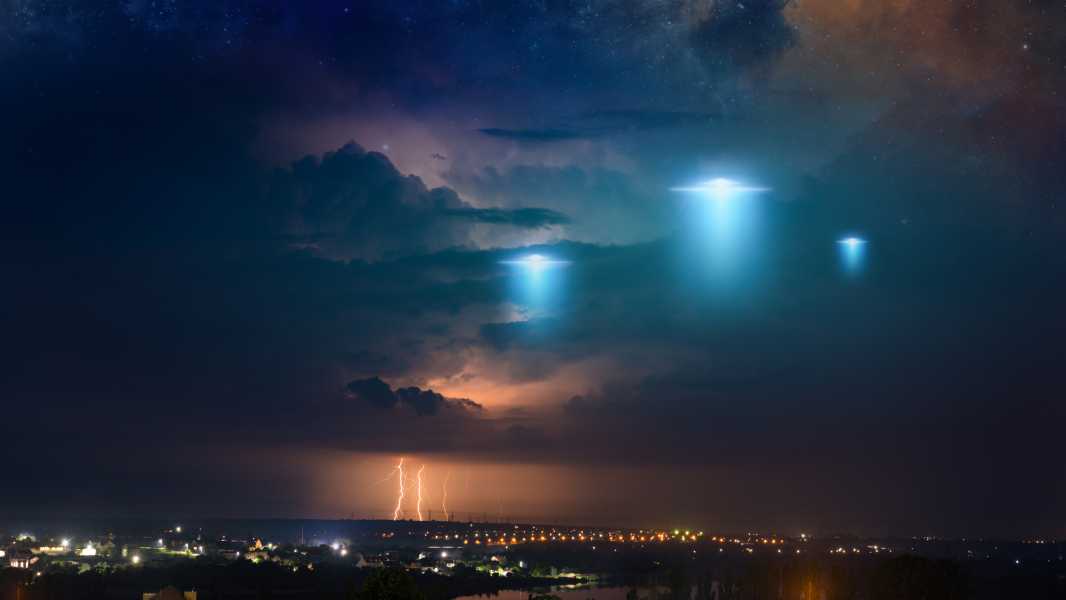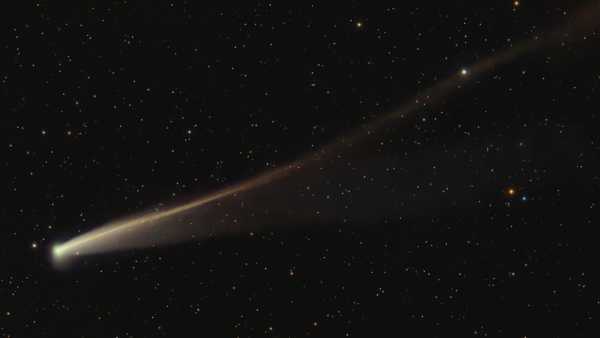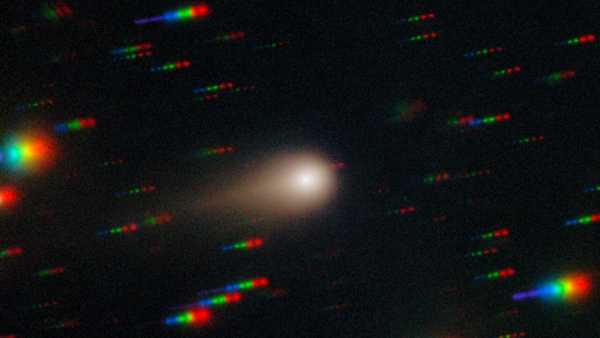
An artistic rendering of a UFO appearing over a small town. (Image credit: Shutterstock)
Mysterious lights in the sky, little green men and crashed ships hidden in government labs – the relatively recent history of UFOs is rife with conspiracy theories and accusations of cover-ups.
However, despite the endless debate between believers and skeptics about what lies behind these phenomena, one thing remains clear: many people have observed the skies and reported things that defy explanation. So what can these UFO reports tell us about ourselves?
To discuss UFO sightings, their origins, and their connection to cultural and political trends past and present, Live Science spoke with Greg Eghigian, a professor of history and bioethics at Pennsylvania State University. His new book, After the Saucers (Oxford University Press, 2024), is one of the first social studies of UFOs, or unidentified anomalous phenomena (UAPs). Here’s what he had to say.
Ben Turner: Many people believe that UFOs entered the public consciousness after the Roswell incident. But your book says otherwise. When did it all start?
Greg Eghigian: If we look at this as a social phenomenon – not just seeing something strange in the sky, but as the creation of an object, and that one of the likely explanations would be that it was aliens – we can note that this all started to develop on June 24, 1947.
Private pilot Kenneth Arnold sees these objects [that day] over Washington State during his flight. He lands and reports them to the military and the press. When asked how they flew, he says that these things moved like saucers bouncing on the water. Then, a day or two later, the journalist creates this memorable headline: “Flying Saucers.”
Once the concept of flying saucers came into common usage, everything fell into place.
BT: But Roswell happened just a few weeks later. How did a small town in New Mexico become world famous for UFOs while Arnold's name remains relatively unknown?
GE: Here's what a lot of people don't understand about Roswell. The story that happened in Roswell is that there was some material found near an Air Force base that they thought might have come from a crashed flying saucer.
Within a day, the BBC is backtracking, claiming that it is not true and that the people who first discovered it were mistaken. In fact, those who were on the scene and found it were not qualified to make such a conclusion.
They didn't understand what they had in their hands, and the people who usually handled the materials were at a conference. When they finally got a chance to look at it, they said, “Oh, this is a pretty mundane thing,” and they fixed their mistakes.
So Roswell gets a lot of attention, a lot of world news coverage for about 24-48 hours, and then it disappears. It's never really talked about again, and it leaves very little trace in the UFO world for decades.
It wasn't until the late 1970s that some ufologists (which has become quite common in the UFO world) went back into the archives, looked deeper into the story, and found all these contradictions. That's when Roswell became the center of attention.
Sourse: www.livescience.com





